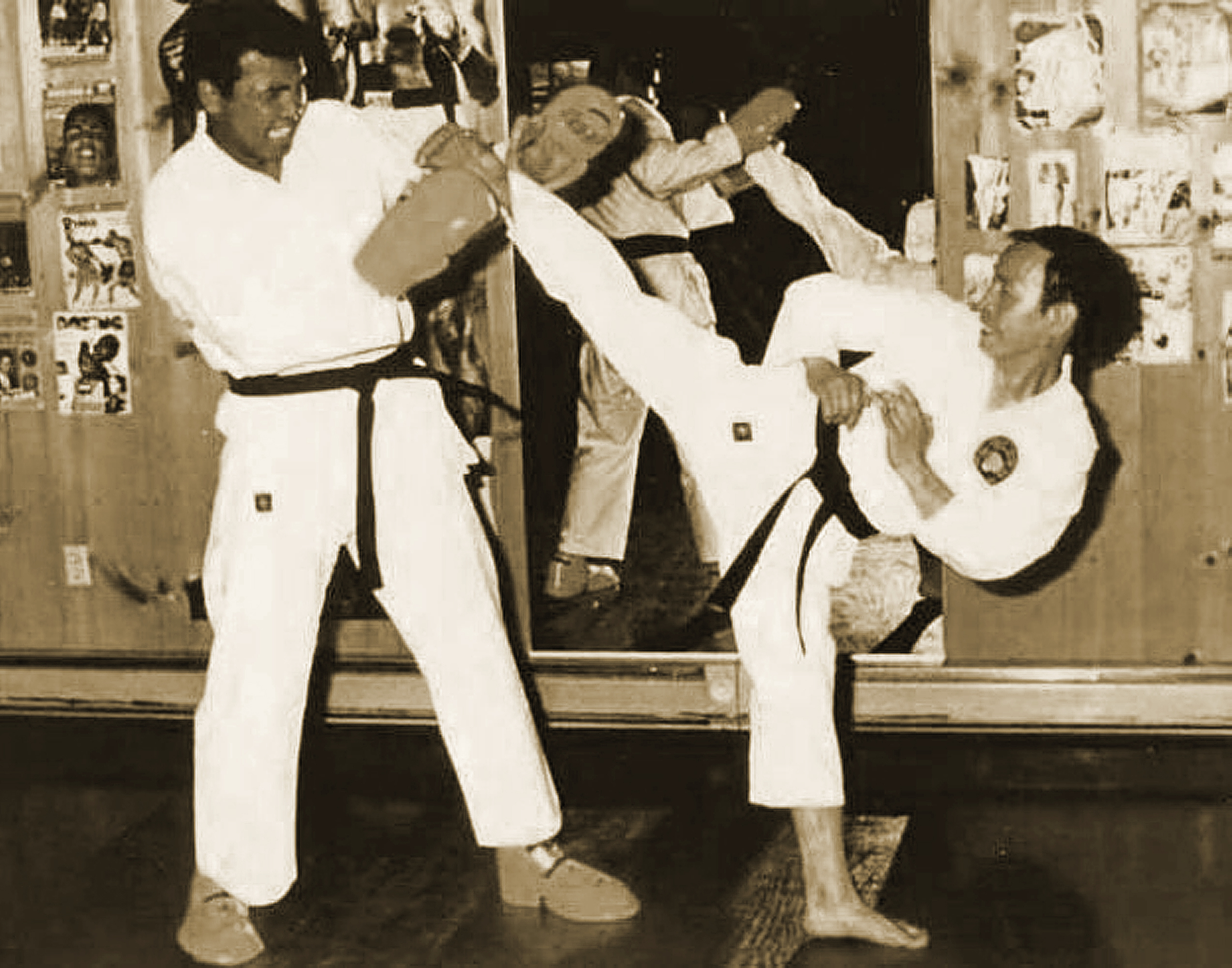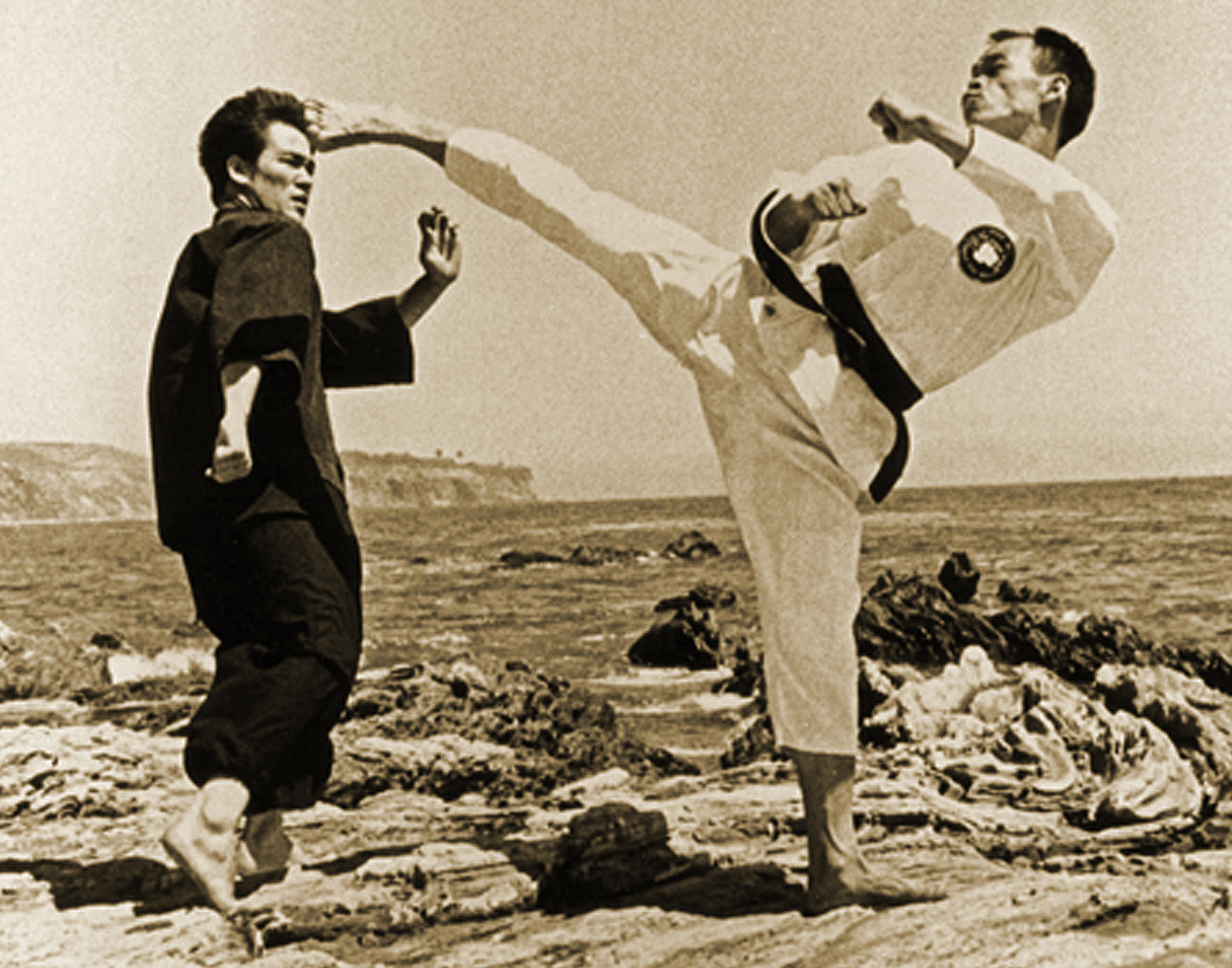Jhoon Rhee TKD


What is Jhoon Rhee style of Tae Kwon Do?
Jhoon Rhee Tae Kwon Do is one of the most recognized and respected martial arts systems in the World. He is considered to be the father of American Tae Kwon Do being the first to teach in the USA in Texas in the mid 1950’s. Jhoon Rhee style of Tae Kwon Do is self-defense oriented (vs. sports oriented) but with emphasis on Tae Kwon Do as a fitness and family activity. It also focuses on building true confidence through knowledge in the mind, honesty in the heart, and strength in the body. This style of martial arts teaches students the coordination of balance, control, and technique which results in the development of “Might for Right”.
The Pacific Kicks martial artists are capable of controlling their kicks and punches without making contact. Pacific Kicks martial artists are capable of taking themselves out of bad situations. Tae Kwon Do uses every muscle of the body as it is considered one of the best forms of unarmed self-defense.
When visiting Pacific Kicks Jhoon Rhee praised the students during a black belt test saying, “The first time in my 46 years, all are outstanding students.”
Why is White Belt material so important?
One of the most common mistakes all martial artists make – not just Tae Kwon Do students – is assuming that the positions and techniques they learn as a white belt are for beginners and the positions and techniques they will learn as a black belt are somehow more effective. Jhoon Rhee claimed there is little, if any, difference between the moves a newcomer learns during his first few months and the self-defense moves a 20-year veteran would use on the street.
“So-called advanced techniques are really just basic moves coupled with speed and accuracy,” Jhoon Rhee said. “Advanced training comes from one source: the performance of many, many repetitions. Each basic move must be repeated over and over again to become part of you. The only way to become a skilled martial artist is to learn how to perform automatically. Train so much that your arms and legs operate on their own. You should not even have to think about executing a specific technique. Your hands should be like heat-seeking missiles, guiding themselves to their target.” -Taken from an interview in blackbeltmag.com
Climbing the Belt Ladder
Everyone’s heard of the Black Belt. But, of course, that’s not where you start. There are several steps along the way. You can think of each as a rung on a ladder. In fact, the “belt ladder” is what many call the progression system. It includes not only colors, but stripes, each marking the achievement of a new set of skills.
A stripe doesn’t mean you’ve mastered the skill, it only means that you’ve learned it well enough that you can practice it correctly on your own.
Time or number of classes you attended is not the measure we use to evaluate a student’s readiness for new material and additional challenges. If you are moved to the next belt level before you are ready for added challenges we only set you up for failure. Everyone wants to be on the varsity team but if you are not ready for the team you end up sitting on the bench and become defeated. Each belt level is full of increasing challenges. If you are still working on improving the material you’ve just learned what value is there in overloading you with more material.
We learn what we learn, we know what we know and we can do what we can do or choose to do, the belt is not the achievement. We need your help in supporting the understanding that it is not a belt race and in many cases we need to be better prepared for that next belt jump.
The language and excitement that you, as a parent, show your child can either help or hurt your child’s understanding of their achievements. We are glad that you have goals and are excited about your child’s achievements. Most parents don’t want to see their children struggle, but it’s when they struggle that the growth and character building opportunities present themselves.
Promotional Requirements
There are 9 belt levels before black belt:

Each belt level has 3 stripe requirements. The first stripe for Combinations, the second for Forms, and the third for sparring skills.
Each belt level has a series of requirements broken down into 5-steps:
Combinations, Forms, Technical Kicks, Sparring, & Presentation.
To qualify for a belt promotion all the below requirements must be met:
- Present a positive attitude
- If in school (K-12), provide a copy of your report card
- Complete at least the minimum number of classes (At least 8 classes in the last 30 days) *Note: Under belt classes are classes below you current belt rank
– White thru Green Belts – 30 regular classes
– Purple to Blue Belts – 37 regular classes
– Blue thru Black Belts – 37 regular classes & 7 under belt classes
- Earn all required stripes
- Fill out Exam Application & complete final test on the floor with a passing grade
Test dates will be posted on the white board in the lobby. Test/Graduation dates are generally the 3rd Friday of each month during which the school is closed for regular classes. It is our goal to help each person achieve the highest level possible and this takes time, hard work, and patience.
